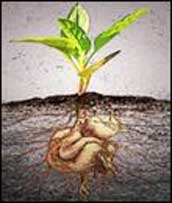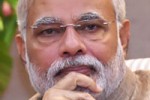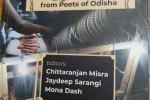Santosh Jain PassiAkanksha JainWomen play an important role in shaping the destiny of our civilization, yet the girl child, very often, not only faces neglect and disparity but sometimes the gravest forms of violence/crime.In India, traditions/rituals undermine the very existence of girl child.Despite tremendous hue and cry about gender equality and the enforcement of laws for achieving the same, a large number of new-born girls are still being dumped in the garbage, while the unborn female foetuses continue to be sniffed in the womb.Wrought with discrimination and prejudices, our society has often dealt the young girls/women with a rough hand, beginning even before their birth and following through infancy, childhood, adolescence and adulthood (including pregnancy and lactation) till the last leg of their life. Although, some of the age old traditions like Sati, Jauhar, and Devadasi have been banned and are largely defunct in modern India yet sporadic instances are still been reported from remote parts of the country.Similarly, the purdah system which is drifting away particularly among the urban and the elite, is still being practised in some communities particularly the rural households.Again child marriage – particularly of the girl child, although illegal, continues to be an issue in rural areas.Other issues of concern are domestic violence, dowry, rape, molestation, sexual harassment and immoral trafficking.Domestic violence is endemic and occurs despite the fact that women in India are legally protected under the Protection of Women from Domestic Violence Act.Discrimination against girl child is in several forms – nutritional deprivation by way of inadequate breastfeeding and early weaning; unsatisfactory/sub-standard/delayed medical care; poor attention and care resulting in emotional deprivation; and insufficient resource allocation for her health, nutrition, overall development and care as well as schooling and thereafter.All these are the documented causes of high morbidity and mortality among the females.Female foeticide/infanticide is perhaps the worst forms of violence against women where she is denied the most basic and fundamental right – ‘The Right to Life’.Traditionally, the unwanted girl child was done away by poisoning the baby or letting her choke or simply by crushing her tender skull.In our society, the practice of female infanticide had prevailed since long, but female foeticide is the legacy and contribution of the progress in medical science.Owing to technological advances, after pre-natal sex determination, the female embryos/foetuses are selectively eliminated, thereby killing the girl child even before she is born.The long standing tradition of son preference coupled with medical technology gives the status conscious Indian families, a choice between payment of large dowry for their daughters or eliminating the daughters even before their birth.As a result, the advanced medical technology and sophisticated sex determination techniques (post-implantation cell free foetal DNA testing, ultrasound scans, amniocentesis and chorionic villus sampling – CVS) are now being used or rather misused, to get rid of the girl child much before she comes to this world.In India, right from her birth, a girl child is treated as a burden – an extra mouth to feed, an overall liability and other’s property (prayaa Qana).On the other hand, having a son is considered essential so as to carry the family name (vaMSa kao Aagao baZanao vaalaa).Therefore, prayers/lavish offerings are often made with the desire to bear a male child.In a deeply patriarchal society where daughters are often seen as a financial liability, this trend has led to an uptick in crimes including rape, trafficking and the emergence of ‘wife-sharing’ in villages where the sex ratio is low.According to a report by Thomson Reuters, for women, India is the “fourth most dangerous country” in the world.Sex ratio is a valuable determinant of the female population vs.that of men.As per the Population Census-2011, our population comprises 940 females/1000 males indicating a low sex ratio.Declining Child Sex Ratio (CSR; 0-6 years) is a matter of great concern.Prof Ashish Bose – the leading demographer of our country had raised an alarm regarding the “missing girls” and stressed on segregated analysis of demographic data for the under six.As per the Census-2011, the child sex ratio has dropped to 919 females/1000 males.Some of the developed states like Haryana, Punjab, NCT Delhi, Maharashtra and Gujarat lie far below the national average; and Delhi NCT has the lowest child sex ratio (871 girls/1,000 boys in 2011).Though, the overall sex ratio is showing a positive trend, the child sex ratio is registering a decline which is a matter of great concern.The decrease in female birth ratio is considered to be due to violent treatments meted out to the girl child at the time of birth.A recent study (2011) has reported that as many as 12 million Indian girls may have been selectively aborted between 1980 and 2010.MacPherson (2007) had also reported that every year a large number of abortions are being performed solely because the foetus is female.Further, it has been highlighted that even in the rich and educated families, prevalence of sex selective abortions is higher for the second/third-born when the firstborn is a girl child.Women and children constitute a sizeable part of the population and play a critical role in national development.Inclusive growth must begin by breaking an intergenerational cycle of inequity and multiple deprivations faced by the women and the girl-child.It is aptly said that “when we educate a man, we educate an individual; but when we educate a girl/woman, we educate the whole family or rather the entire nation and the humanity”.Many women have touched heights in various fields, both at the National and International levels.Had their parents gone for female foeticide/infanticide, we would have been deprived of their contributions to the growth and development of the society!In India, women have been actively participating in varied areas such as education, sports, politics, media, music, art and culture, services, science and technology etc.Many of them have brought laurels to the country and made name in the society which include:• Savitribai Phule – first woman teacher in India• Mother Teresa – first Indian female citizen Nobel Peace Prize winner• Dhondo Keshav Karve – established 1st women’s university, SNDT (1916)• Annie Besant – first female president of the Indian National Congress.• Sarojini Naidu – India’s first woman governor; and first Indian born female president of the Indian National Congress• Vijaya Lakshmi Pandit – first woman (1st Indian) president of the United Nations General Assembly• Sucheta Kriplani – first woman Chief Minister (Uttar Pradesh)• Captain Durga Banerjee – first Indian woman pilot• Kamaladevi Chattopadhyay – Ramon Magsaysay award winner• Indira Gandhi – 1st woman Prime Minister of India; world’s longest serving woman PM• Bachendri Pal – first Indian woman to climb Mount Everest (1984)• Kiran Bedi – first female IPS recruit• Medha Patkar – social reformer and founder member of Narmada Bachao Andolan • Kamaljit Sandhu – first Indian woman to win a Gold in the Asian Games• Justice M.Fathima Beevi – first woman judge of the Supreme Court of India• Kalpna Chawla – first Indian woman in space; Sunita Williams – Astronaut with longest single space flight by a woman• Pratibha Devisingh Patil: first woman President of India Singers, vocalists and painters – M.S.Subbulakshmi, Gangubai Hangal, Lata Mangeshkar, Asha Bhosle, Anjolie Ela Menon and many others Sports – PT Usha and Anju Bobby George (athletics), Kunjarani Devi (weightlifting), Saina Nehwal (badminton), Koneru Hampi (chess), Sania Mirza (tennis), Karnam Malleswari (weightlifting) and MC Mary Kom (boxer), Anjum Chopra (cricket).Literature – Sarojini Naidu, Kamala Surayya, Shobha De, Arundhati Roy, and Anita Desai.The list is not complete, there are many more women who have excelled in their fields and made immense contributions.Some Initiatives/strategies for improving the status of Girl child/Women include:• “Beti Bachao Beti Padhao” – our flagship programme recently launched by the Prime Minister.The programme is to focus on 100 gender critical districts with low child sex ratio and it is envisaged that if implemented properly, it can help to make India a modern democracy.• Save the girl child initiatives are designed to end the gender-selective abortion of female foetuses.• The GoI has declared 2001 as the ‘Year of Women’s Empowerment (Swashakti)’; and also launched the National Policy for Empowerment of Women.• Conditional cash transfers and scholarships only for girls at various stages of her life; and higher pension benefits to the parents of one/two girls.• Pro-girl policy initiatives like Laadli scheme and other such state level initiatives.• Sukanya Samridhi Yojana (Girl Child Prosperity Scheme), Balika Samriddhi Yojana; and Kishori Shakti YojanaVarious issues relating to the girl child have been embedded in national child policies and addressed through several programmes, such as:• The National Policy for Children, 1974• The National Plan of Action for Children, 2005• The Pre-natal Diagnostic Techniques – Regulation & Prevention of Misuse (PNDT) Act, 1994• Pre-Conception and Pre-natal Diagnostic Techniques – Regulation & Prevention of Misuse (PCPNDT) Act, 2004• The Immoral Traffic (Prevention) Act 1986Ø Since the child sex ratio is slipping fast, Supreme Court of India has directed the states to announce some ‘incentives’ for the families who ‘respect and honour’ the girl child in a bid to curb the evil of female foeticide.Ø Sensitization of the policy makers, planners, administrators, enforcement machinery and the community at large towards gender issues is an important strategy to establish positive image of the girl child/women in the society.Ø Education and empowerment of women, particularly the rural and the marginalized women, is urgently needed so as to improve their status in the family and the community.Women empowerment leads to all-round progress as well as emancipation from absurd beliefs and unscientific practices.Save the Girl Child……Provide her equal opportunities to blossom, grow & excel… ………She is an asset to the society!!!Santosh Jain Passi, Public Health Nutrition Consultant; Former Director, Institute of Home Economics (University of Delhi)Akanksha Jain, Ph D Scholar; Research Associate, LSTech Ventures Pvt.Ltd., Gurgaon(PIB Features)
Although, some of the age old traditions like Sati, Jauhar, and Devadasi have been banned and are largely defunct in modern India yet sporadic instances are still been reported from remote parts of the country.Similarly, the purdah system which is drifting away particularly among the urban and the elite, is still being practised in some communities particularly the rural households.Again child marriage – particularly of the girl child, although illegal, continues to be an issue in rural areas.Other issues of concern are domestic violence, dowry, rape, molestation, sexual harassment and immoral trafficking.Domestic violence is endemic and occurs despite the fact that women in India are legally protected under the Protection of Women from Domestic Violence Act.Discrimination against girl child is in several forms – nutritional deprivation by way of inadequate breastfeeding and early weaning; unsatisfactory/sub-standard/delayed medical care; poor attention and care resulting in emotional deprivation; and insufficient resource allocation for her health, nutrition, overall development and care as well as schooling and thereafter.All these are the documented causes of high morbidity and mortality among the females.Female foeticide/infanticide is perhaps the worst forms of violence against women where she is denied the most basic and fundamental right – ‘The Right to Life’.Traditionally, the unwanted girl child was done away by poisoning the baby or letting her choke or simply by crushing her tender skull.In our society, the practice of female infanticide had prevailed since long, but female foeticide is the legacy and contribution of the progress in medical science.Owing to technological advances, after pre-natal sex determination, the female embryos/foetuses are selectively eliminated, thereby killing the girl child even before she is born.The long standing tradition of son preference coupled with medical technology gives the status conscious Indian families, a choice between payment of large dowry for their daughters or eliminating the daughters even before their birth.As a result, the advanced medical technology and sophisticated sex determination techniques (post-implantation cell free foetal DNA testing, ultrasound scans, amniocentesis and chorionic villus sampling – CVS) are now being used or rather misused, to get rid of the girl child much before she comes to this world.In India, right from her birth, a girl child is treated as a burden – an extra mouth to feed, an overall liability and other’s property (prayaa Qana).On the other hand, having a son is considered essential so as to carry the family name (vaMSa kao Aagao baZanao vaalaa).Therefore, prayers/lavish offerings are often made with the desire to bear a male child.In a deeply patriarchal society where daughters are often seen as a financial liability, this trend has led to an uptick in crimes including rape, trafficking and the emergence of ‘wife-sharing’ in villages where the sex ratio is low.According to a report by Thomson Reuters, for women, India is the “fourth most dangerous country” in the world.Sex ratio is a valuable determinant of the female population vs.that of men.As per the Population Census-2011, our population comprises 940 females/1000 males indicating a low sex ratio.Declining Child Sex Ratio (CSR; 0-6 years) is a matter of great concern.Prof Ashish Bose – the leading demographer of our country had raised an alarm regarding the “missing girls” and stressed on segregated analysis of demographic data for the under six.As per the Census-2011, the child sex ratio has dropped to 919 females/1000 males.Some of the developed states like Haryana, Punjab, NCT Delhi, Maharashtra and Gujarat lie far below the national average; and Delhi NCT has the lowest child sex ratio (871 girls/1,000 boys in 2011).Though, the overall sex ratio is showing a positive trend, the child sex ratio is registering a decline which is a matter of great concern.The decrease in female birth ratio is considered to be due to violent treatments meted out to the girl child at the time of birth.A recent study (2011) has reported that as many as 12 million Indian girls may have been selectively aborted between 1980 and 2010.MacPherson (2007) had also reported that every year a large number of abortions are being performed solely because the foetus is female.Further, it has been highlighted that even in the rich and educated families, prevalence of sex selective abortions is higher for the second/third-born when the firstborn is a girl child.Women and children constitute a sizeable part of the population and play a critical role in national development.Inclusive growth must begin by breaking an intergenerational cycle of inequity and multiple deprivations faced by the women and the girl-child.It is aptly said that “when we educate a man, we educate an individual; but when we educate a girl/woman, we educate the whole family or rather the entire nation and the humanity”.Many women have touched heights in various fields, both at the National and International levels.Had their parents gone for female foeticide/infanticide, we would have been deprived of their contributions to the growth and development of the society!In India, women have been actively participating in varied areas such as education, sports, politics, media, music, art and culture, services, science and technology etc.Many of them have brought laurels to the country and made name in the society which include:• Savitribai Phule – first woman teacher in India• Mother Teresa – first Indian female citizen Nobel Peace Prize winner• Dhondo Keshav Karve – established 1st women’s university, SNDT (1916)• Annie Besant – first female president of the Indian National Congress.• Sarojini Naidu – India’s first woman governor; and first Indian born female president of the Indian National Congress• Vijaya Lakshmi Pandit – first woman (1st Indian) president of the United Nations General Assembly• Sucheta Kriplani – first woman Chief Minister (Uttar Pradesh)• Captain Durga Banerjee – first Indian woman pilot• Kamaladevi Chattopadhyay – Ramon Magsaysay award winner• Indira Gandhi – 1st woman Prime Minister of India; world’s longest serving woman PM• Bachendri Pal – first Indian woman to climb Mount Everest (1984)• Kiran Bedi – first female IPS recruit• Medha Patkar – social reformer and founder member of Narmada Bachao Andolan • Kamaljit Sandhu – first Indian woman to win a Gold in the Asian Games• Justice M.Fathima Beevi – first woman judge of the Supreme Court of India• Kalpna Chawla – first Indian woman in space; Sunita Williams – Astronaut with longest single space flight by a woman• Pratibha Devisingh Patil: first woman President of India Singers, vocalists and painters – M.S.Subbulakshmi, Gangubai Hangal, Lata Mangeshkar, Asha Bhosle, Anjolie Ela Menon and many others Sports – PT Usha and Anju Bobby George (athletics), Kunjarani Devi (weightlifting), Saina Nehwal (badminton), Koneru Hampi (chess), Sania Mirza (tennis), Karnam Malleswari (weightlifting) and MC Mary Kom (boxer), Anjum Chopra (cricket).Literature – Sarojini Naidu, Kamala Surayya, Shobha De, Arundhati Roy, and Anita Desai.The list is not complete, there are many more women who have excelled in their fields and made immense contributions.Some Initiatives/strategies for improving the status of Girl child/Women include:• “Beti Bachao Beti Padhao” – our flagship programme recently launched by the Prime Minister.The programme is to focus on 100 gender critical districts with low child sex ratio and it is envisaged that if implemented properly, it can help to make India a modern democracy.• Save the girl child initiatives are designed to end the gender-selective abortion of female foetuses.• The GoI has declared 2001 as the ‘Year of Women’s Empowerment (Swashakti)’; and also launched the National Policy for Empowerment of Women.• Conditional cash transfers and scholarships only for girls at various stages of her life; and higher pension benefits to the parents of one/two girls.• Pro-girl policy initiatives like Laadli scheme and other such state level initiatives.• Sukanya Samridhi Yojana (Girl Child Prosperity Scheme), Balika Samriddhi Yojana; and Kishori Shakti YojanaVarious issues relating to the girl child have been embedded in national child policies and addressed through several programmes, such as:• The National Policy for Children, 1974• The National Plan of Action for Children, 2005• The Pre-natal Diagnostic Techniques – Regulation & Prevention of Misuse (PNDT) Act, 1994• Pre-Conception and Pre-natal Diagnostic Techniques – Regulation & Prevention of Misuse (PCPNDT) Act, 2004• The Immoral Traffic (Prevention) Act 1986Ø Since the child sex ratio is slipping fast, Supreme Court of India has directed the states to announce some ‘incentives’ for the families who ‘respect and honour’ the girl child in a bid to curb the evil of female foeticide.Ø Sensitization of the policy makers, planners, administrators, enforcement machinery and the community at large towards gender issues is an important strategy to establish positive image of the girl child/women in the society.Ø Education and empowerment of women, particularly the rural and the marginalized women, is urgently needed so as to improve their status in the family and the community.Women empowerment leads to all-round progress as well as emancipation from absurd beliefs and unscientific practices.Save the Girl Child……Provide her equal opportunities to blossom, grow & excel… ………She is an asset to the society!!!Santosh Jain Passi, Public Health Nutrition Consultant; Former Director, Institute of Home Economics (University of Delhi)Akanksha Jain, Ph D Scholar; Research Associate, LSTech Ventures Pvt.Ltd., Gurgaon(PIB Features)
March 12, 2015
Breaking News:
- Canadians mourn as Jasper, jewel of the Rockies, burns
July 26, 2024, 11:07 pm - 2 Delta Passengers Take Over VIP Lounge After Flight Delay
July 26, 2024, 10:21 pm - Donald Trump Seen in Public Without Ear Bandage
July 26, 2024, 8:55 pm - Can You Guess What Percent Of People Have $500,000 Saved For Retirement? Shockingly, It's Probably Less Than You Think
July 26, 2024, 8:15 pm - Grandmother kills college track coach in murder-suicide in wealthy New York neighborhood: police
July 26, 2024, 7:48 pm - Alison Chao’s father arrested by Monterey Park police
July 26, 2024, 7:16 pm - Boeing asks suppliers for decade-long titanium paper trail as check for forgeries widens
July 26, 2024, 6:12 pm - 'Awfully weird': Trump 'absolutely' regretting picking JD Vance
July 26, 2024, 3:02 pm - Fast Food Chains That Could Go Bankrupt In 2024
July 26, 2024, 2:40 pm - Toyota will replace engines in 100,000 recalled Tundras and Lexus LXs
July 26, 2024, 1:15 pm
















